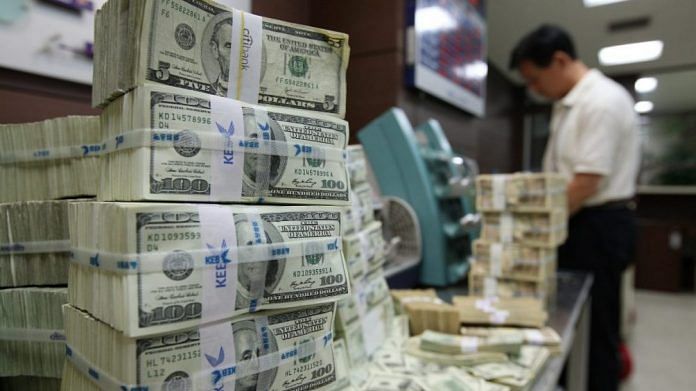Mumbai: The rise in India’s foreign exchange reserves to above $600 billion may not be enough to beat the challenges looming for Asia’s third-largest economy, according to some central bankers and economists.
The pile touched a record $608 billion last month, thanks mainly to the Reserve Bank of India soaking up dollars flowing in as foreign direct investments, as well as into the nation’s booming stock market. The hoard may help reassure investors and credit-rating companies about the government’s ability to meet its debt obligations despite a deteriorating fiscal outlook.
But the headline number hides some deficiencies, say analysts, including researchers at the central bank led by Deputy Governor Michael Patra. “Levels are often deceptive,” Patra and his colleagues at the RBI wrote in the latest central bank bulletin.
Here are five charts that show why India is vulnerable to external shocks despite the record reserves:
While the pile — the fifth-largest in the world after China, Japan, Switzerland and Russia — is enough to cover 15 months of imports, it’s well behind Switzerland’s reserves — which can pay for 39 months of imports — Japan’s 22 months and Russia’s 20 months, according to RBI researchers.
As the economy recovers from the pandemic’s second wave, demand for imports is likely to increase in coming months.
Although India’s foreign reserves are rising, the economy still has a net negative international investment position — meaning foreigners hold more Indian assets than the nation holds foreign assets. The negative number is an imbalance that the central bank will want to fix, according to Radhika Rao, an economist with DBS Bank Ltd. in Singapore.
“This imbalance is likely to keep the central bank keen to further strengthen the buffer, also providing key ammunition to fight-off short-term volatility in global developments,” Rao said.
Nations that run chronic current-account deficits tend to rely on foreign equity and debt capital for their financing. While foreign short-term debt as a share of reserves has been steadily dropping, Indian policy makers often fret about the country’s exposure to external shocks.
Debt investments, especially those that chase high-yielding emerging assets like those from India, can shift suddenly and cause volatility in local asset markets, especially to the partially convertible rupee.
Foreign inflows have without doubt aided the nation’s reserves build-up. But the good times could soon end as the U.S. Federal Reserve prepares to withdraw some of its extraordinary monetary stimulus, potentially triggering outflows from emerging markets.
A recent working paper published by the Bank for International Settlements showed India is vulnerable to monetary tightening by the Fed, with outflows potentially impacting financial conditions and the economy at large. The paper showed that when the U.S. tightens monetary policy, financing conditions for Indian non-financial firms deteriorate as their net worth falls and access to credit worsens.
At the same time, a weakening rupee combined with higher U.S. interest rates leads to a downturn in both domestic credit and the business cycle, according to the BIS paper.
Reserves accretion is a priority for the central bank, Governor Shaktikanta Das said last month, citing the RBI’s efforts to stabilize financial-market and liquidity conditions so that monetary policy remains independent to “pursue national objectives.”
Analysts say Das’s comments imply the RBI is trying to manage the so-called “Impossible Trinity” — maintaining monetary-policy independence, allowing a steady flow of foreign capital and keeping the currency stable — by choosing to pursue an independent rates policy. That resolve is bound to be tested in the months ahead.
“The upcoming Fed taper and hiking cycle thereafter will test the defense,” DBS Bank’s Rao said. –Bloomberg
Also read: Why RBI’s hoarding of forex reserves over currency concerns will be counter-productive



